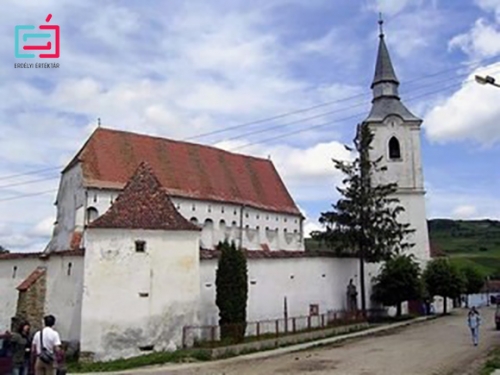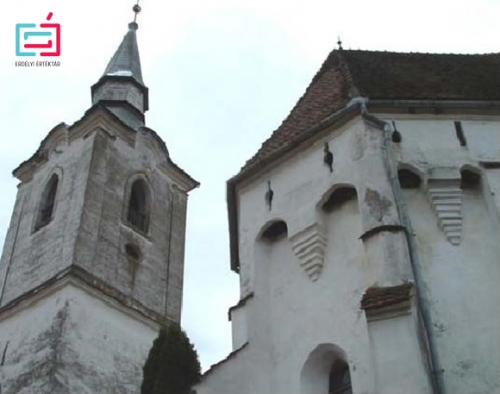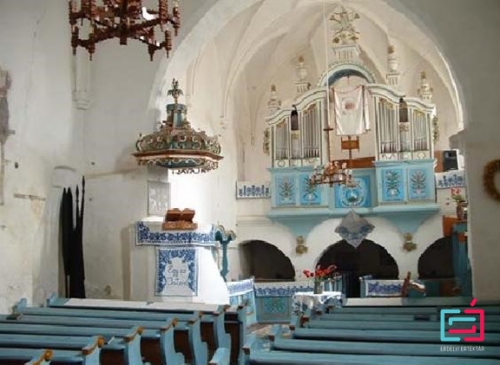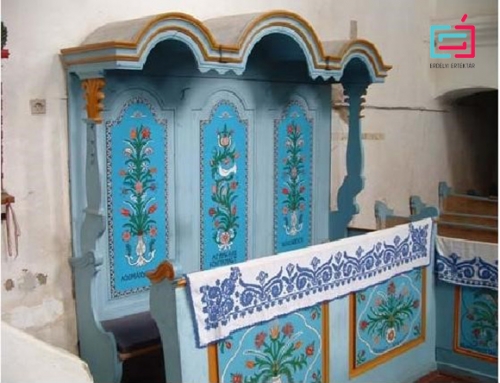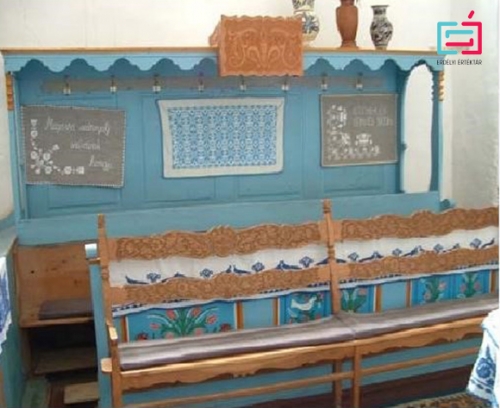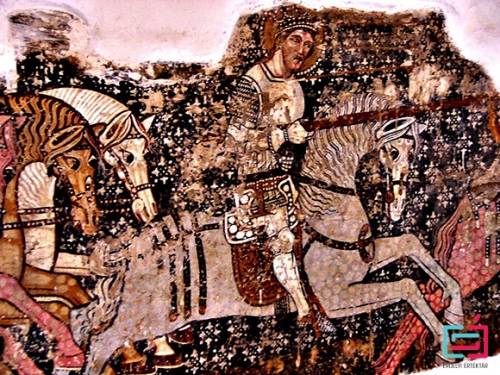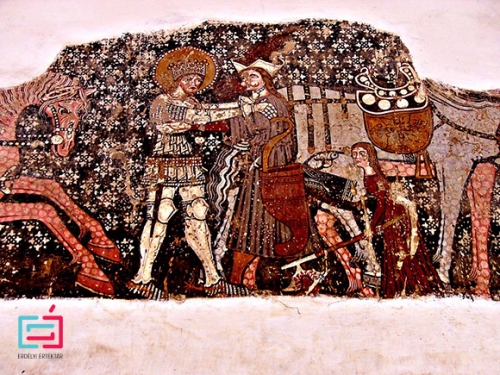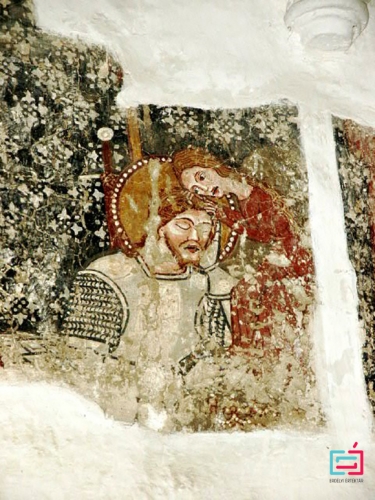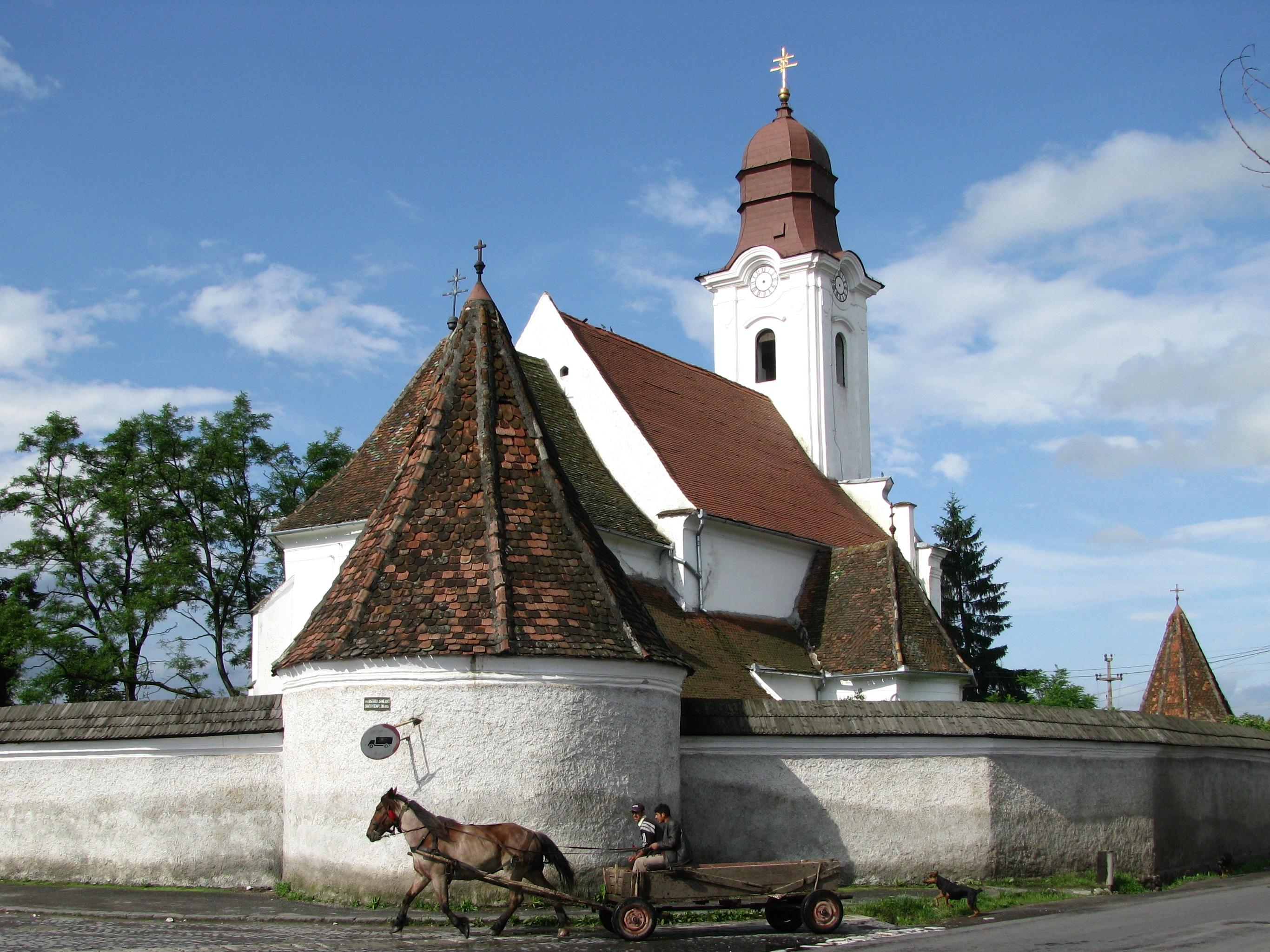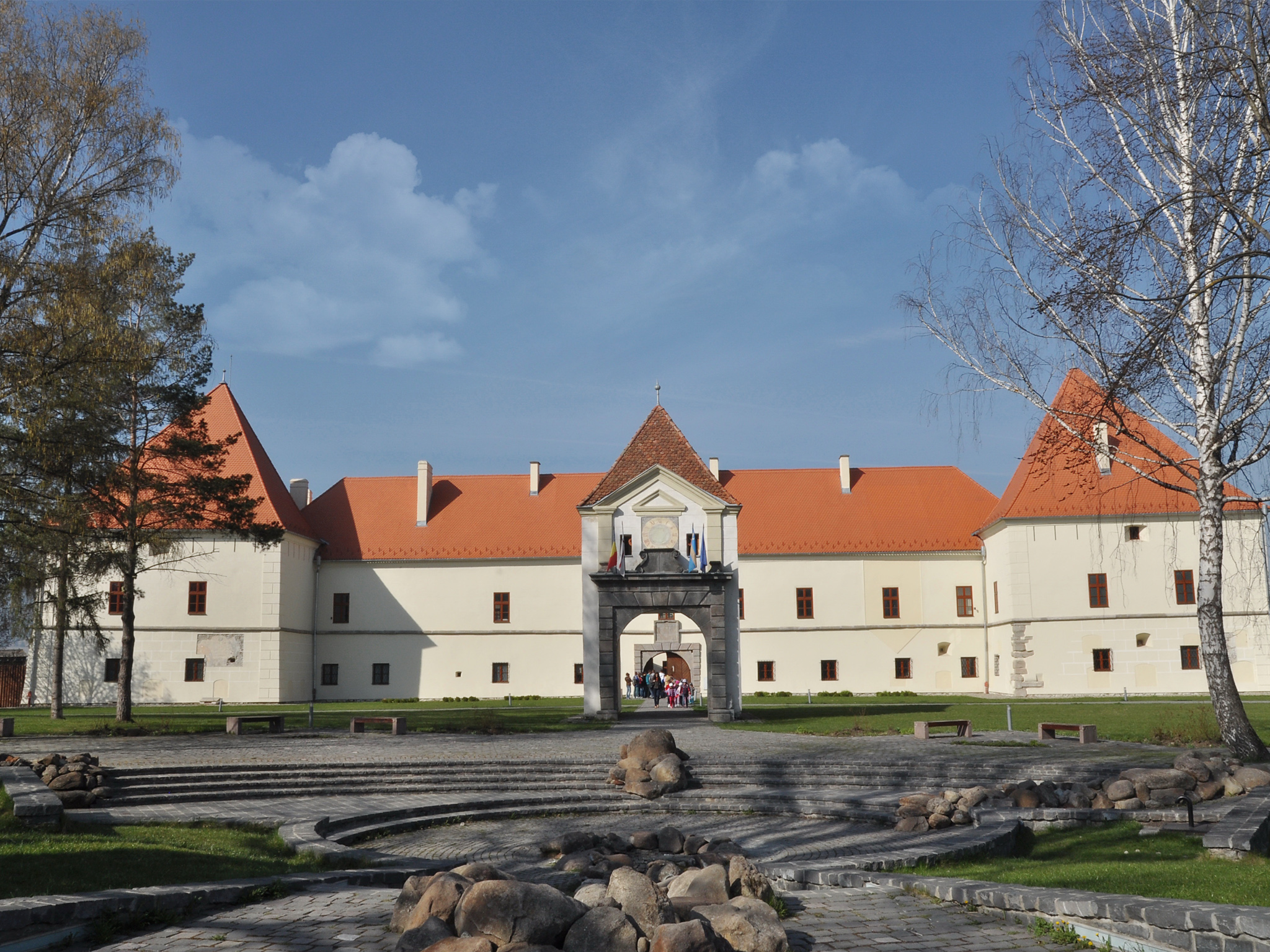Dârjiu is situated 21 km southwest of Odorheiu-Secuiesc, in the valley of the river Great (or Lok), between high hills.
It was first mentioned as Ders in 1334. Traditionally, the old village was in Pénzes vineyard, which most probably disappeared during the Mongol invasion. The village also had a chapel that was built by saxons that later moved to Daroc . According to the oral tradition, today’s population has moved to Daroc through population exchange.
The village is the old nest of the Petky family, their mansion being in the place of today’s cultural house. In 1910 there were 1390 Hungarian inhabitants, in 1992 from 844 of inhabitants, 836 were Hungarians and 8 Romanians. Until the Trianon Peace Treaty, it belonged to Odorhei County.
The fortified church is the only Hungarian monument in Romania, which is part of UNESCO World Heritage.
The fortified church is made up of three units: a tower, a fence and a church. In addition to the monumental architecture among the unique features of the castle, are included the unique heritage of the world, a rune writing and mural paintings from the 15th century, including legend representation of King Saint Ladislau.
Compared to the fortress wall, it can be assumed from the oblique position of the tower that the temple was once surrounded by a curved bridge. Today’s tower height is 38 meters. It’s original height was raised with 10 meters in 1866.
Inside the castle wall there was once a circular corridor, with which the fortress could be protected against attacks. They were demolished in 1788, because the church lost it’s defense. They built stables in which the villagers could put their objects (different tools) and keep a stock of grain in their huts and spears. The bastions were suitable for storing bacon and smoked meat.
The tradition of over 200 years is still preserved by the village’s population as a living heritage. As a living tradition, the custom built around, is a unique attraction.
Another specific feature would be the fountain of defense in the southwestern corner of the church wall, which is also linked to the religious tradition of the settlement. For centuries it has been prescribed that only water from this spring can be used for christening, being clean and drinkable.
The church was built in different times: the part of the sanctuary (where the organ is located) in the 1200 years, the church itself in the 1400s, the castle’s wall and the bastions were built in the 1500s. The protective surface at the top of the church, along with canopies, was built in 1605.
The wooden temple benches were made in 1790 and distributed to families in proportion to their salary, with the condition that each member of the family have to stay only in his family’s bank.
The church pulpit is decorated with a painted crown, with artistic sculptures and decorations made in 1759. They were made by Mihály Bartha and his wife, Judit Dénes. The inscription says: “Shout like the trumpet”.
Until 1871, the midday bell was heard only from St. George’s day to St. Michael’s day. After 1871, the bell sounded three times a day: in the morning, at noon and in the evening. Besides the daily bell, there is a special sound of bell for ceremonies and in case of storm. The large bell in the tower was built at the order of János Petky in Dârjiu in 1607.
Besides the bell made by Mr. Petky, according to records, in 1674 the parish cast a small bell, which was confiscated during the First World War for military purposes. Today’s small bell was cast by the parish in 1923 from public taxes.
During the repair work carried out in 1929, a brick with inscription was discovered at the opening of the outside window, which was close to the entrance. It’s date is still uncertain. References from the literature date back to the period between 1274-1431 and highlight the fact that, the inscription is the oldest memorial in Central Europe, through his technique burned in bricks. Not only it’s creation, but it’s reading is also controversial. The most accepted version of the translations is: father-priest Miklós Derzsi.
The gallery of the organ was built in 1800. Then was made the first organ, which in 1837 was replaced by the existing one today. The organ’s metal types were removed at the end of the First World War and were used for military purposes. Completely only in 1946 was restored, after the Second World War.
The vault of the sanctuary is decorated with carved stones. On the right of the pulpit, above the priest’s seat, there are two closing stones that represents a mocking face. After the mocking faces on the first closing stone you can see the Szekler’s coat of arms, on the second is represented on a coat of arms a plug, the third being the Petky family’s coat of arms.
On the right of the entrance, the first picture presents the conversion of Apostle Paul. The event which took place on the Damasc road, the next few days and the christening is concentrated in a single picture of the creator. In the face of the beard, we are most likely to see the master’s self-portrait. The Latin subtitle of the accompanying soldier’s flag shows that the wall painting was made in 1419.
The second picture illustrates the whole figure of St. Michael the Archangel. He holds a weighing with bowl, on which are devils in the upper scale, and a praying woman in the lower part.
The third image on the south is just a fragment, showing three figures, who wears mitral bishop on their heads and holds a bishop crozier in their hands. In the descriptions of art history we can read about them as saints of the bishop, but we can meet them as the three wise kings, who are pilgrimaging to the little Jesus.
Under the gallery which was built in 1720 there is a fragment of the image of a legendary female martyr. It shows women with their hands tied, and their back bleeding, as they are pushed out of a tower.
The northern wall of the church is entirely dominated by the legend of Saint Ladislau. Due to the exploration from 2008, the wall cycle was completed with a description of the escape. The bishop blesses the King and his army which start from Oradea Castle to the Cumanians. This is followed by the battle, followed by the pursuit of the cumanians, the fight itself, decapitation, and finally the repose scene. The stones of the Gothic vault are sometimes embedded in the carpet of the wall, but generally do not impede aesthetic experience.
On the last representation of the northern part of the wall is a saint in a gray dress. Through it’s symbols read from pictorial writings we can recognize the hermit Saint Anthony, who has in front two women in red dress with glory on her head. A similar illustration of the hermit Saint Anthony appears on the wings of the parish of Roman Catholic church of Szepesszombat, made in 1503, titled: The Temptation of St. Anthony.
Dârjiu Fortified Church



